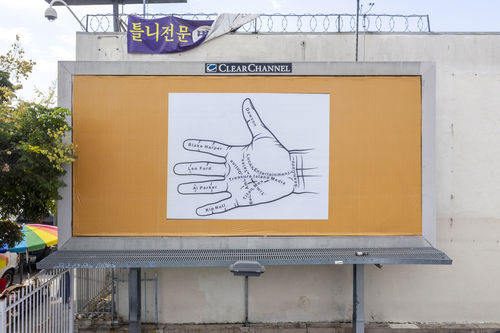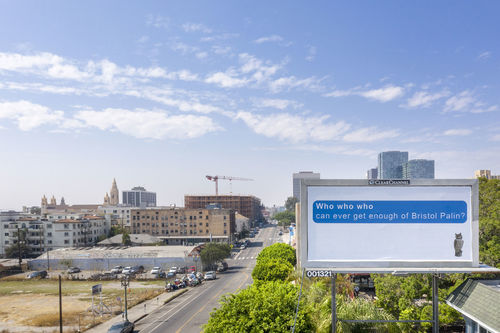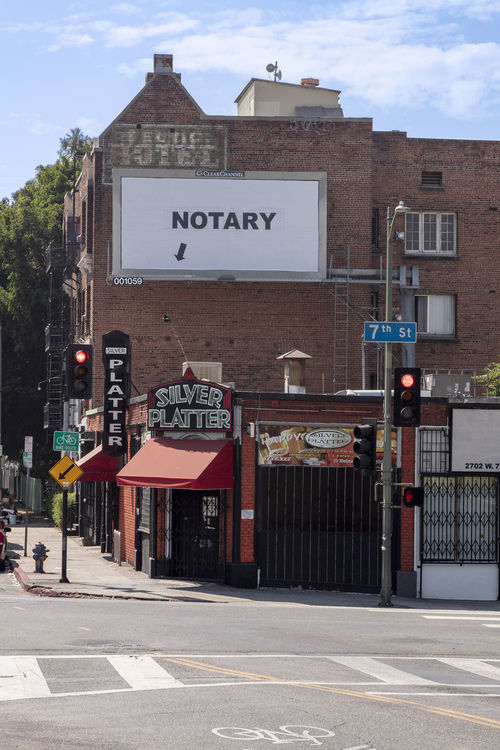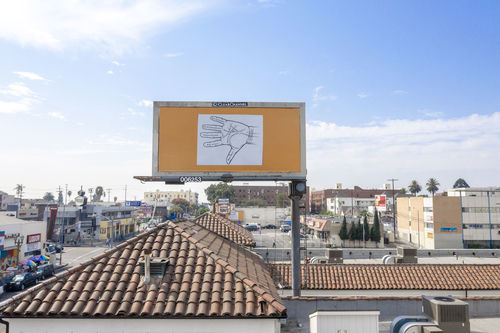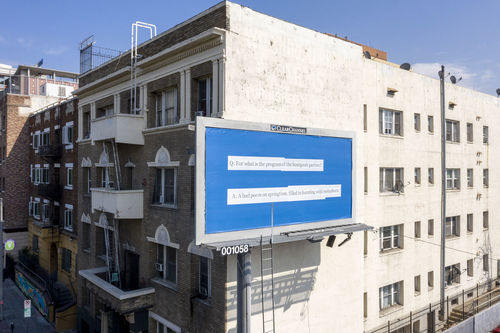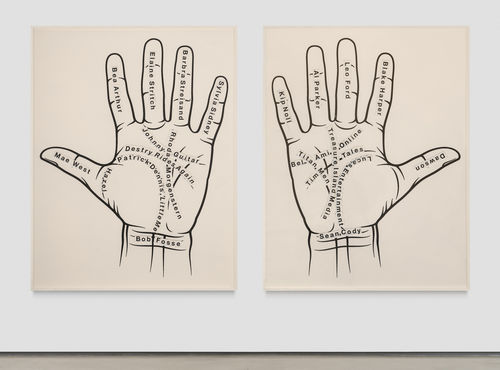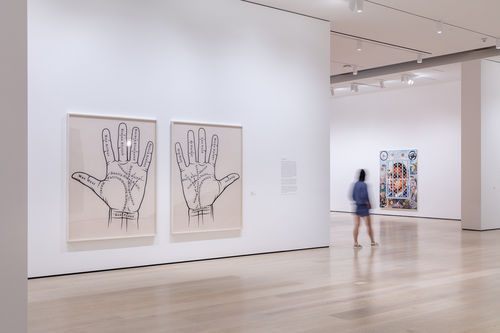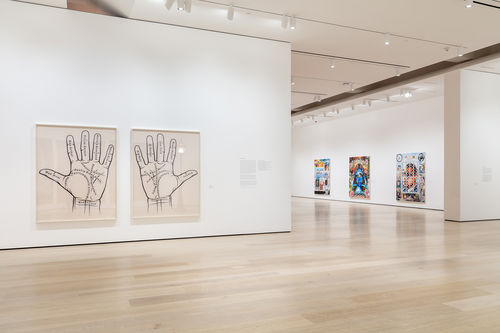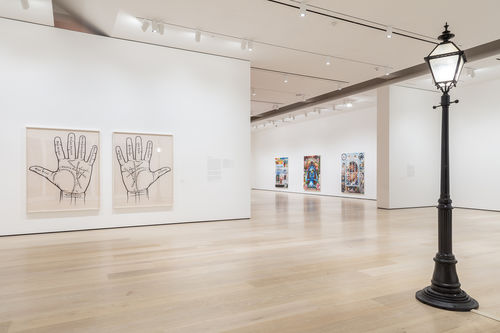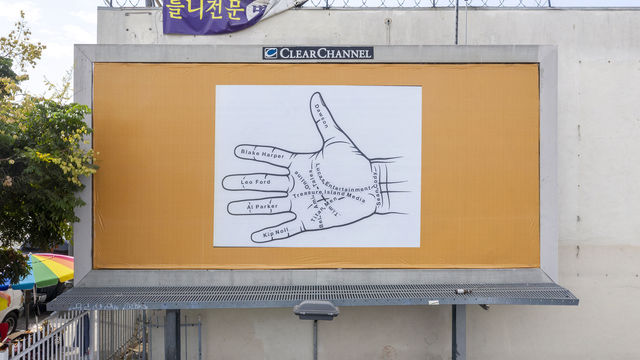
Larry Johnson
Larry Johnson hails from the Southern California town of Lakewood, and for the past forty years he has employed strategies of appropriation to channel and extract tensions at the core of American culture. Mining a slew of popular source material, Johnson draws on vocabularies of animation, commercial design, and advertising in a manner that subverts the feel-good rhetoric of consumerism. Image and text share space in his work in cryptically critical ways, as shorthand phrases, logos, and slogans celebrate the veneer and vices of Hollywood and, more broadly, Los Angeles. A rogues’ gallery of archetypes and recognizable figures—hustlers, Walt Disney, John F. Kennedy—creep into Johnson’s tableaux, which are in step with his classless, Marxist sensibilities, rendering questions of high and low moot.
For Made in L.A. 2020, Johnson has created a set of five billboards carefully staged in the neighborhood of MacArthur Park. Their content features site-specific texts and visuals. Poetic interventions into space and local geography, the billboards quote their cultural and quotidian environment.
These five billboards by Larry Johnson are co-produced by The Billboard Creative for Made in L.A. 2020: a version.
Billboard Locations:
- Notary, 2020, S. Rampart Blvd. and W. Seventh St., Los Angeles 90057 (facing north)
- Q&A, 2020, W. Seventh St. and S. Rampart Blvd., Los Angeles 90057 (facing south)
- Bristol, 2020, Hoover St. and W. Seventh St., Los Angeles 90005 (facing east)
- Palmistry, 2020, W. Eighth St. and S. Alvarado St., Los Angeles 90057 (facing north)
- Palmistry 2, 2020, W. Eighth St. and S. Alvarado St., Los Angeles 90057 (facing north)
Biography
Born in 1959, Larry Johnson hails from the iconic Middle American town of Lakewood, California—the one Joan Didion wrote about in 1993 for the New Yorker. Didion described a city on the cusp of economic and moral decline, with the maleficent might of mass culture partly at fault. This—the understated notoriety and cynicism that would invade Lakewood and much of the United States—has seeped into Johnson’s four-decade-long career. He earned his bachelor’s and master’s degrees at California Institute of the Arts and set about working, like many of his generation, within strategies of appropriation, using cartoon illustrations, logos, and letterheads as a way of channeling cultural tensions. This amalgam of ephemera mined from popular culture nods to languages of animation, graphic and commercial design, and advertising without capitulating to the feel-good rhetoric of consumerism. Image and text share space in Johnson’s work in ways that are cryptically critical as well as celebratory of the veneer and vices of Hollywood and, more broadly, Los Angeles. Everything—hustlers, Walt Disney, President Kennedy—creeps into Johnson’s tableaux, which are in step with his classless, Marxist sensibilities, rendering questions of high and low moot. Johnson has had solo exhibitions at Jenny’s (with Asha Schechter), Los Angeles (2019); Raven Row, London (2015); Hammer Museum, Los Angeles (2009); and Morris and Helen Belkin Art Gallery, University of British Columbia, Vancouver (1996). Other group exhibitions of note include those at the Museum of Contemporary Art, Los Angeles (2019, 2009, 2004, 1996); Musée d'Art Moderne et Contemporain, Geneva (2016); Whitney Museum of American Art, New York (1991); and Museum of Modern Art, New York (1989, 1985), among others.



